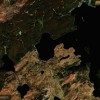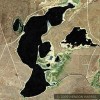
Advanced Asiatic Archery Techniques and Technology Appear In North America (North America was ÔÇťinvaded by the compound bow at its north eastern extremityÔÇŁ Page 257)
Posted on Tuesday, April 19th, 2011
In the process of researching evidences of the ÔÇťcomposite bowÔÇŁ in North America I have come across an article on the subject that deserves to be featured and reviewed by itself. The article is ÔÇťThe Aboriginal Bow and Arrow of North America and Eastern AsiaÔÇŁ by Spencer L. Rogers. (To access this 15-page article click on ÔÇťGet PDFÔÇŁ (739k) at the bottom of the opening page.)
This well researched article was originally published in American Anthropology in the April-June 1940 issue on pages 255-269. It was first available online on October 28, 2009.
ÔÇťPrevious studies of weapons culture in the region of the Pacific have been limited to local discussions of regional surveys of either Asia or AmericaÔÇŁ.
ÔÇťThe purpose of the following analysis is to begin an intercontinental comparison between America and Asia in regard to the culture complex of archery on a broader basisÔÇŽÔÇŁ
ÔÇťThe form and construction of bows and arrows and methods of arrow release are considered.ÔÇŁ Page 255
In my opinion this article is a must read for anyone interested in the history of archery and for those that believe Pre-Columbian Trans Pacific cultural exchanges may have or did occur between Asia and the Americas after the original migration from Asia that is reported to have occurred approximately 10,000 or more years ago.
The reason I am most encouraged by this writing is that the quoted scholarsÔÇÖ research that was used clearly shows that the same archery technology was present in Northern Asia as well as Northern America all the way to Greenland. Ice bridge or not the Bering Straits apparently did not present an insurmountable obstacle for the transfer of cultural exchanges and technology from flowing back and forth between the two continents.
In addition in the article Rogers uses maps to illustrate the location of archery styles in the two continents. This is where it gets particularly interesting.
For reasons that cannot yet be explained advanced Asian archery techniques appear among the Siouan family of tribes of North America. This grouping is┬á commonly referred to as the ÔÇťPlains IndiansÔÇŁ and include well-known tribes such as the Sioux of Dakota, Cheyenne, Apraho, Black Feet, Comanche, Kiowa and others. Next to the Algonquian, the Siouan family of tribes is the most populous linguistic tribal group north of Mexico.
How is it that this tribal group in America has Asian style archery equipment and uses the Mongolian style of arrow release? It is reported that one of the main reasons for the composite bow was to make a bow that could be used more effectively from horseback. It needed to be smaller than the long bow but just as powerful and accurate. The Mongols demonstrated how effective a fighting weapon this was by conquering the largest contiguous land empire in the history of the world by relying primarily on these bows. How then did this technology and arrow release technique show up on the plains of North America used by the Comanches so effectively as well?
The maps included in this article increase the mystery. Map #6 on page 267 shows the three primary methods of arrow release methodology around the world. On both sides of the Pacific you see very similar patterns. Inexplicably in the middle of North America you see the same Mongolian arrow release that is seen directly across the ocean. Could that indicate that Chinese immigrants brought that technology from China?
Is this really surprising? When people leave their homes and migrate to a new country they go to climates and environments that are similar to what they had in their original homeland.
Why are there are so many Americans of Scandinavian/Lutheran lineage living in Minnesota, the Dakotas and Wisconsin? Could it have anything to do with the ÔÇťland of lakesÔÇŁ and the Scandinavian love of water and a colder climate? I believe so.
To better understand the battle for the Great Plains of North American and the clashing of two determined cultures read ÔÇťEmpire of the Summer MoonÔÇŁ by S. G. Gwynne. Also read ÔÇťThe Horse in AmericaÔÇŁ (1965) by Robert West Howard.
The Beak of the 10th Sun/Raven – Still Glows

















